Name HMS Ardent Ordered 17 April 1973 Commissioned 13 October 1977 Construction started 26 February 1974 Length 117 m | Laid down 26 February 1974 Launched 9 May 1975 Draft 5.94 m | |
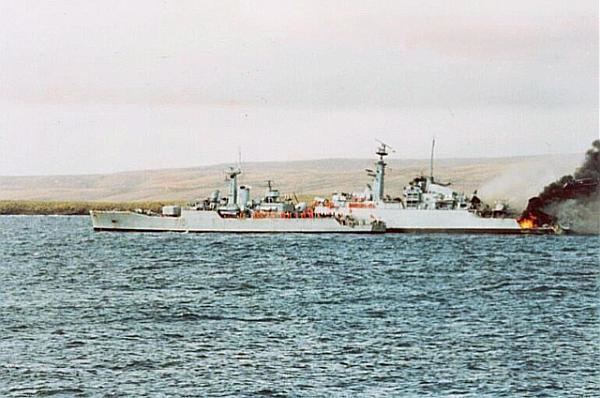 | ||
HMS Ardent was a Royal Navy Type 21 frigate. Built by Yarrow Shipbuilders Ltd, Glasgow, Scotland. She was completed with Exocet launchers in 'B' position. Ardent took part in the Falklands War, where she was sunk by Argentine aircraft in the Falkland Sound on 21 May 1982.
Contents
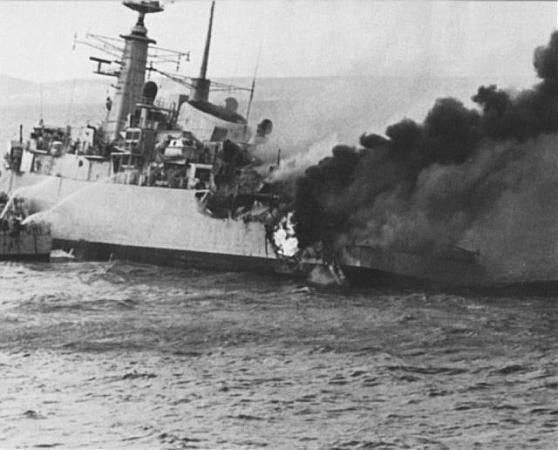
Falklands War
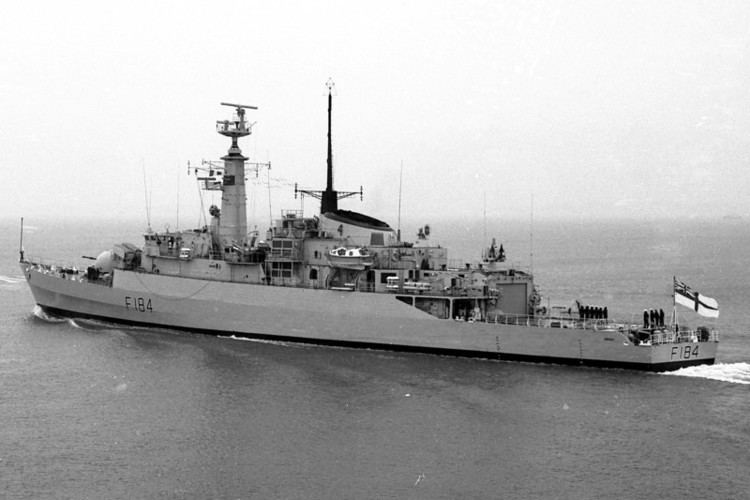
On 19 April 1982 Ardent sailed from HMNB Devonport near Plymouth for the Falkland Islands. On route, she escorted task force ships that had left late, on their way to Ascension Island, arriving on 3 May and sailing on the morning of the 7 May. On 9 May 1982 while 700 miles south west of Ascension, Ardent closed to within 200 yards of the starboard side of the troopship Canberra and provided a gun power demonstration to the troops sailing south.
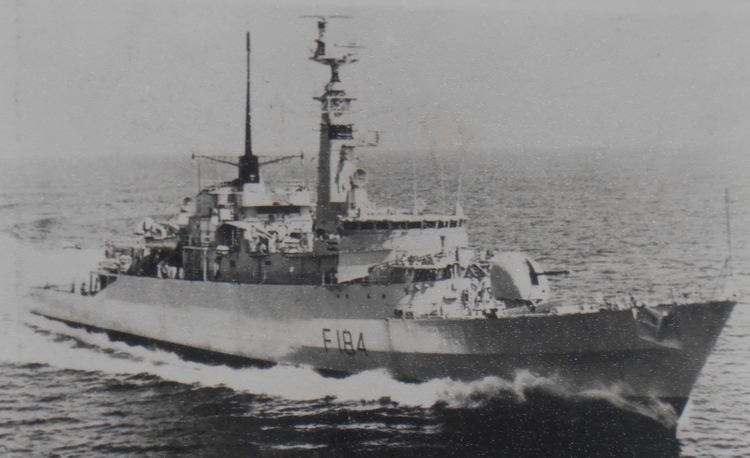
On 21 May 1982, whilst lying in Falkland Sound and supporting Operation Sutton by bombarding the Argentine airstrip at Goose Green, Ardent was attacked by at least three waves of Argentine aircraft. The air strikes caused Ardent to sink the next day.
British version
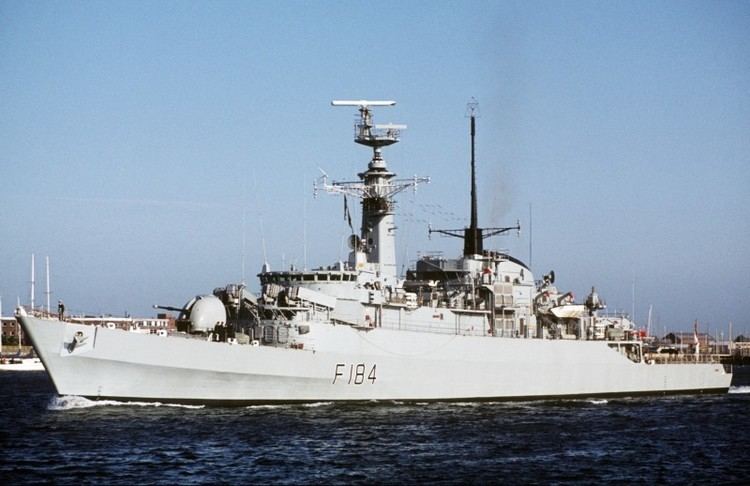
The first attack took place when a lone A-4 Skyhawk dropped two bombs at 16:00 Z (UTC), which straddled the frigate but both failed to explode.
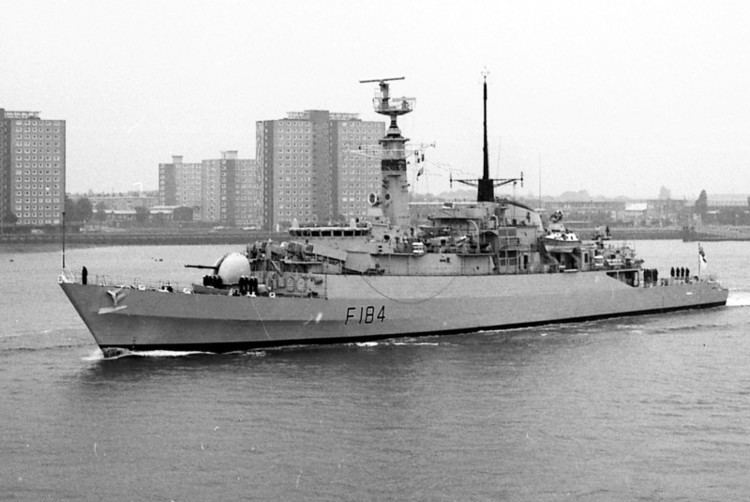
The bulk of the air strikes began at 17:40 Z. Ardent was ordered to proceed west of North West Island along with Yarmouth to "split air attacks from the south". A group of three aircraft, either Skyhawks or IAI Daggers crossed the Falklands Sound from the west and then turned to their left to attack from the north east. Cannon fire and three bombs struck home as the Argentine aircraft pressed their attack from the port side. The only defensive weapons which reacted properly were the 20 mm AA cannons.
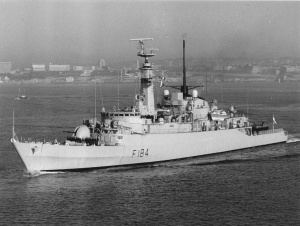
The Sea Cat anti-aircraft missile system failed to lock onto the attackers, who also outmanoeuvred the 4.5" gun by carrying out their run out of its arc of fire. Two bombs exploded in the hangar area, destroying the Westland Lynx helicopter and blowing the Sea Cat launcher 80 ft (24 m) into the air before it crashed back down onto the flight deck, and the third crashed through the aft auxiliary machinery room but failed to explode. The aft switchboard was severely damaged, causing loss of power for some key assets, such as the main gun. The hangar was left in flames, and the crew suffered a number of casualties.
Still in full control of her engines and steering, but virtually defenceless, Ardent was told to head north, toward Port San Carlos. But at 18:00 Z five Skyhawks approached the frigate and dropped numerous free-fall and retard bombs. A pattern of two to four bombs exploded in the port quarter (aft), while an undetermined number of others which failed to explode penetrated into the ship. Some of the remaining bombs exploded in the water nearby, battering the ship and causing minor flooding in the forward auxiliary machine room.
The dining hall was shattered, communications between the bridge and the ship control centre were cut off, and the ship lost steering. This attack caused many casualties, especially among the damage-control teams working in the hangar.
Ardent stopped in the shallow waters of Grantham Sound, the fires in her stern now out of control. With the ship listing heavily, Commander Alan West decided to abandon the ship. Yarmouth came alongside to take off survivors, and the crew was transferred to Canberra. At that time it was known that 22 men had lost their lives. Ardent continued to burn throughout the night, accompanied by the occasional explosion, until she sank at 6:30 Z the next day, with only her foremast remaining above the water.
Able Seaman John Dillon was able to remove debris from an injured sailor and, despite his own burns, got the man topside and into the water where they were both rescued. For his heroism he received a George Medal.
The last man to leave was her captain, Commander Alan West, who was subsequently awarded the Distinguished Service Cross, and served as First Sea Lord from 2002–2006.
Within days naval divers removed her light AA guns for fitting to other ships and her foremast was used as a navigational warning and datum by her sister ship Arrow whilst she bombarded Goose Green.
The wreck is designated as a prohibited area under the Falkland Islands Protection of Wrecks Act.
Air Force attacks
According to the Argentine Air Force official website Ardent was the subject of two attacks from FAA aircraft:
Navy aircraft sortie
During their escape they were shot down by Sea Harriers. The pilot who made the final run, Lt. Gustavo Marcelo Márquez was killed in action after his A-4Q was hit by 30 mm fire and exploded. Lt. Philippi, shot down by an AIM-9L Sidewinder missile, ejected safely; after being sheltered by local farmer Tony Blake during the night he rejoined Argentine forces. Lt. Arca, with his A-4Q also struck by 30 mm rounds, bailed out safely after an unsuccessful attempt to land at Stanley. The pilot was rescued from the water by the Argentine Army Huey UH-1H of Captain Svendsen. Arca ejected at Cape Pembroke, two miles (3 km) from Stanley airstrip.
